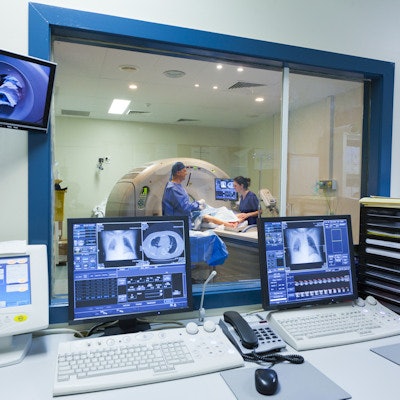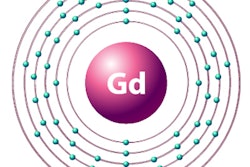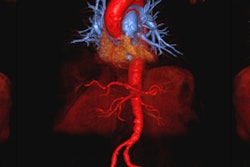
Could ferumoxytol replace gadolinium-based contrast agents (GBCAs) for some MRI scans? It is a possibility, given that it is well tolerated by patients with chronic kidney disease and caused no serious adverse events, according to a study published in the December issue of Radiology.
Researchers reviewed more than 4,000 injections of ferumoxytol over 15 years and found only minor adverse events, which occurred in less than 2% of patients. The results are particularly noteworthy, since GBCAs can be especially harmful for patients with insufficient renal function (Radiology, December 2019, Vol. 293:3, pp. 554-564).
"Across a wide range of age, applications, and injection rates in patients with chronic kidney disease, ferumoxytol holds promise as a safe alternative or complement to existing gadolinium-based contrast agents and extends MRI applications beyond their current bounds," wrote the authors, led by Dr. Kim-Lien Nguyen, from the department of radiological sciences at the University of California, Los Angeles.
Gadolinium is a heavy metal that can be toxic to humans, especially patients with poor renal function. Their inability to excrete the contrast agent is believed linked to nephrogenic systemic fibrosis.
On the other hand, ferumoxytol is composed of small superparamagnetic iron oxide particles that can be detected with MRI. It is sold commercially as Feraheme by Amag Pharmaceuticals and is cleared in the U.S. and Europe for the treatment of iron deficiency anemia in adult patients with chronic kidney disease and has served as an MRI contrast agent.
In March 2015, however, the U.S. Food and Drug Administration (FDA) issued a black box warning about potential acute hypersensitivity reactions from ferumoxytol after 79 cases of serious adverse events were reported. The incidents included 18 deaths during the therapeutic use of ferumoxytol among some 1.2 million injections. As a result, the FDA cited the bolus injection of undiluted ferumoxytol as a potential risk factor and recommended that the agent be diluted, infused over 15 minutes (rather than the original protocol of 17 seconds), and that clinicians monitor blood flow in organs and tissue for up to 30 minutes after administration.
"Despite studies supporting innovative off-label theranostic applications and single-center reports on safety, the relative safety of ferumoxytol for diagnostic use is still not well defined," the authors noted. "Thus, we established the FeraSafe multicenter MRI registry as an academic collaboration to investigate the safety of ferumoxytol and to facilitate collaboration among users exploring its diagnostic applications."
Their results are in this study of 3,215 patients (median age, 58 years; range, 1 day to 96 years) from nine medical centers in the U.S. and two facilities in the U.K., which administered a total of 4,240 ferumoxytol injections for MRI scans between January 2003 and October 2018. The majority of patients (1,442, 45%) in the study were between 35 and 65 years old.
The researchers' review uncovered no serious adverse events or serious allergic reactions under close monitoring of patients after injection. Eighty-three (1.9%) minor adverse events were definitively or possibly related to ferumoxytol, of which 75 were mild reactions (1.8%) and eight were moderate reactions. In addition, 31 cases were deemed allergic-like reactions but were consistent with minor infusion reactions.
| Most common adverse reactions to ferumoxytol MRI contrast | |
| Symptoms | No. of cases (%) |
| Hypertension | 10 (0.3%) |
| Nausea | 9 (0.3%) |
| Severe itching | 9 (0.3%) |
| Headache | 8 (0.3%) |
| Vomiting | 7 (0.2%) |
| Hypotension | 7 (0.2%) |
While these results certainly are promising, the researchers acknowledged that longer-term results are needed to further validate ferumoxytol's safety.
"In patients with impaired renal function or allergic reactions to GBCAs and in those needing multiple intravenous contrast-enhanced MRI examinations, the benefits relative to the risks of ferumoxytol versus GBCAs merit close consideration," Nguyen and colleagues added. "In patients with complex or extensive vascular disease, the imaging properties of ferumoxytol may offer definite advantages over extracellular GBCAs. Dosing and infusion rates require patient-specific adjustment depending on the clinical indication."



.fFmgij6Hin.png?auto=compress%2Cformat&fit=crop&h=100&q=70&w=100)




.fFmgij6Hin.png?auto=compress%2Cformat&fit=crop&h=167&q=70&w=250)











